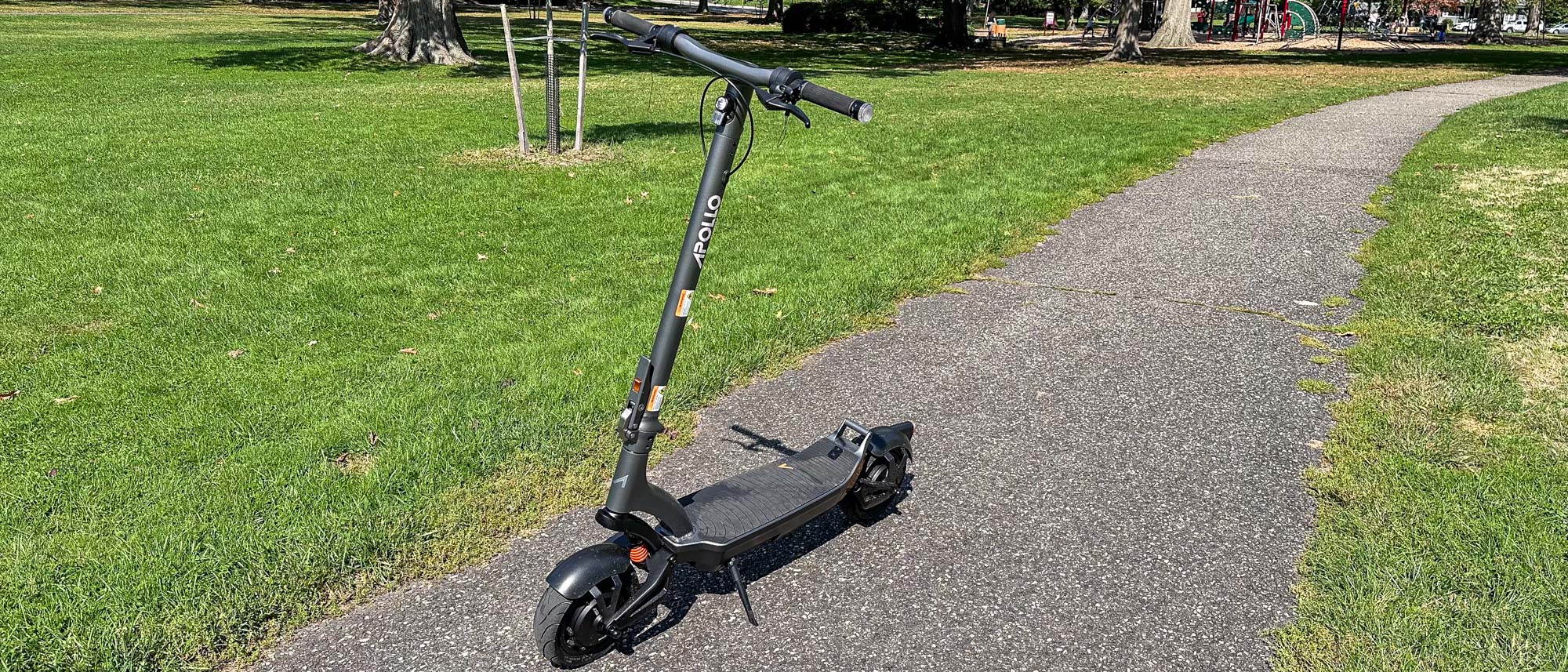Tom's Guide Verdict
The Apollo City is a fast and powerful electric scooter with a great range. However, Segway and NIU both offer scooters that may not go as fast, but can go as far, for much less money.
Pros
- +
Very powerful
- +
Great range
- +
Fast
- +
Comfortable to ride
Cons
- -
Headlight could be brighter
- -
Turn signal buttons should be on the left side
Why you can trust Tom's Guide
Size (unfolded): 47.1 x 45.7 x 26.8 inches
Motor: 500W
Max. speed: 27 MPH/32 MPH
Battery: 48V 20Ah
Max range: 40/43 miles
Weight: 57/65 pounds
Max rider weight: 220/265 pounds
The Apollo City is one aptly named electric scooter. This machine has the endurance to handle long-distance commutes, the power to keep pace with urban traffic, and the tires and suspension needed to ride smoothly over the U.S.’s crumbling infrastructure. In a key upgrade from its predecessor, the Apollo City 2023 also has turn signals on both the deck and handlebars to make you even more visible to cars around you.
I rode the Apollo City around my town for a few weeks to get a handle on its speed, capabilities, and range, and came away impressed with its performance. But, you’ll want to read the rest of my Apollo City review to see if this is the best electric scooter for you, or if there is another model that will better meet your needs.
Apollo City 2023 review: Price and availability
The Apollo City went on sale in the fall of 2023. It comes in two variants: The dual-motor model, which has 500W motors in both the front and rear tires, and can reach speeds of up to 32 MPH, costs $1,649, while the single-motor variant (which tops out at 27 MPH) costs $1,499.
The single-motor variant has a range of 23-40 miles, while the dual-motor version has a range of 23-43 miles. Not surprisingly, the single-motor version is slightly lighter (57 pounds) than the dual-motor model (65 pounds).
Apollo City 2023 review: Design
Visually, the Apollo City 2023 is very similar to the original Apollo City; It has a large deck that tapers gently toward the rear, with a large bar at the back that makes it a little easier to pick up this 57-pound monster.
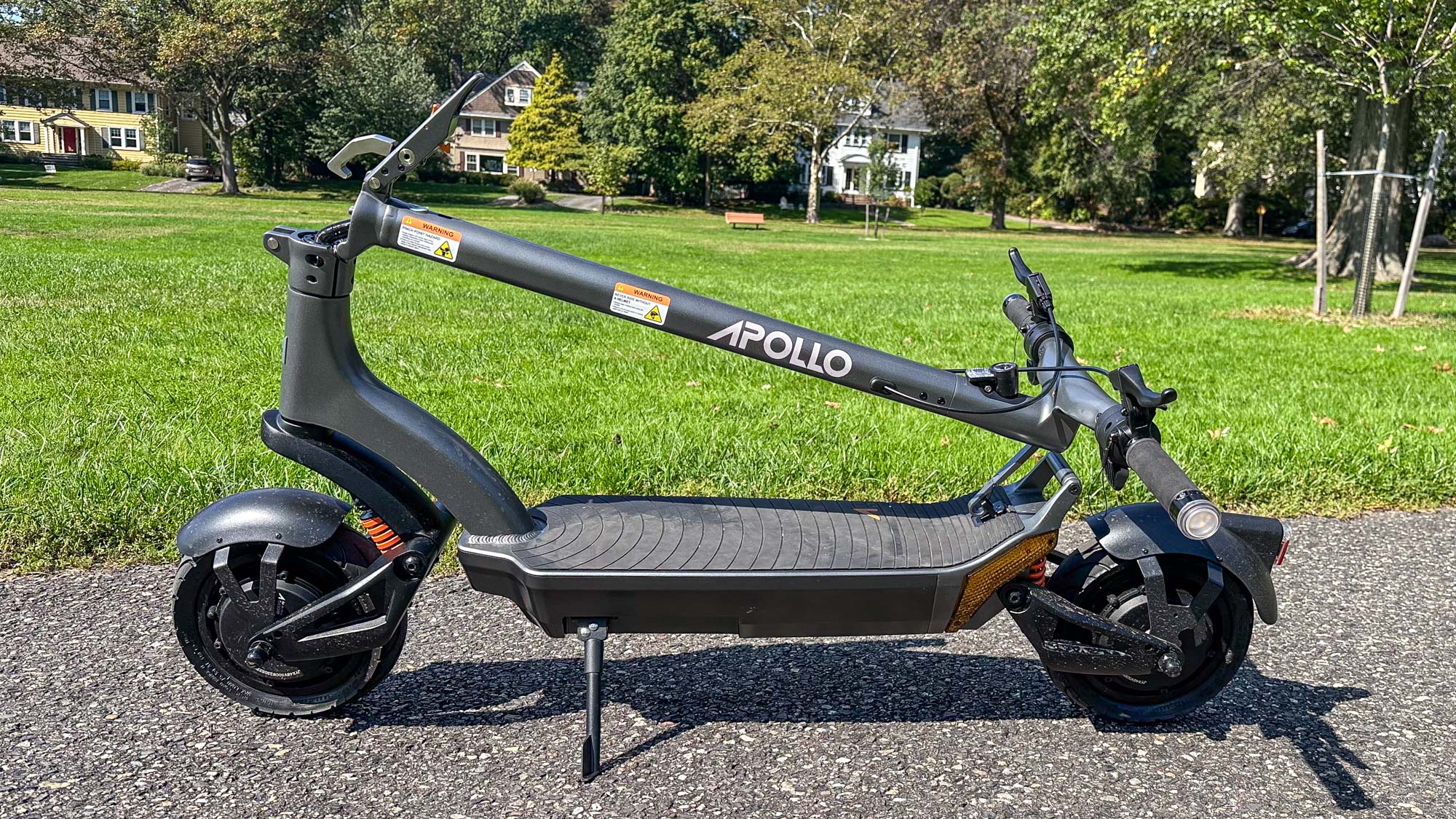
The biggest visual difference between the 2023 City and the 2022 model is that the newer version has turn signal indicators not just at the rear of the deck, but also at the ends of the handlebars. I recently tested the Segway Ninebot Kickscooter Max G2, which also has turn signals on the handlebars. As someone who rides scooters on busy streets, I like this feature, as it makes your intentions a lot clearer to traffic.
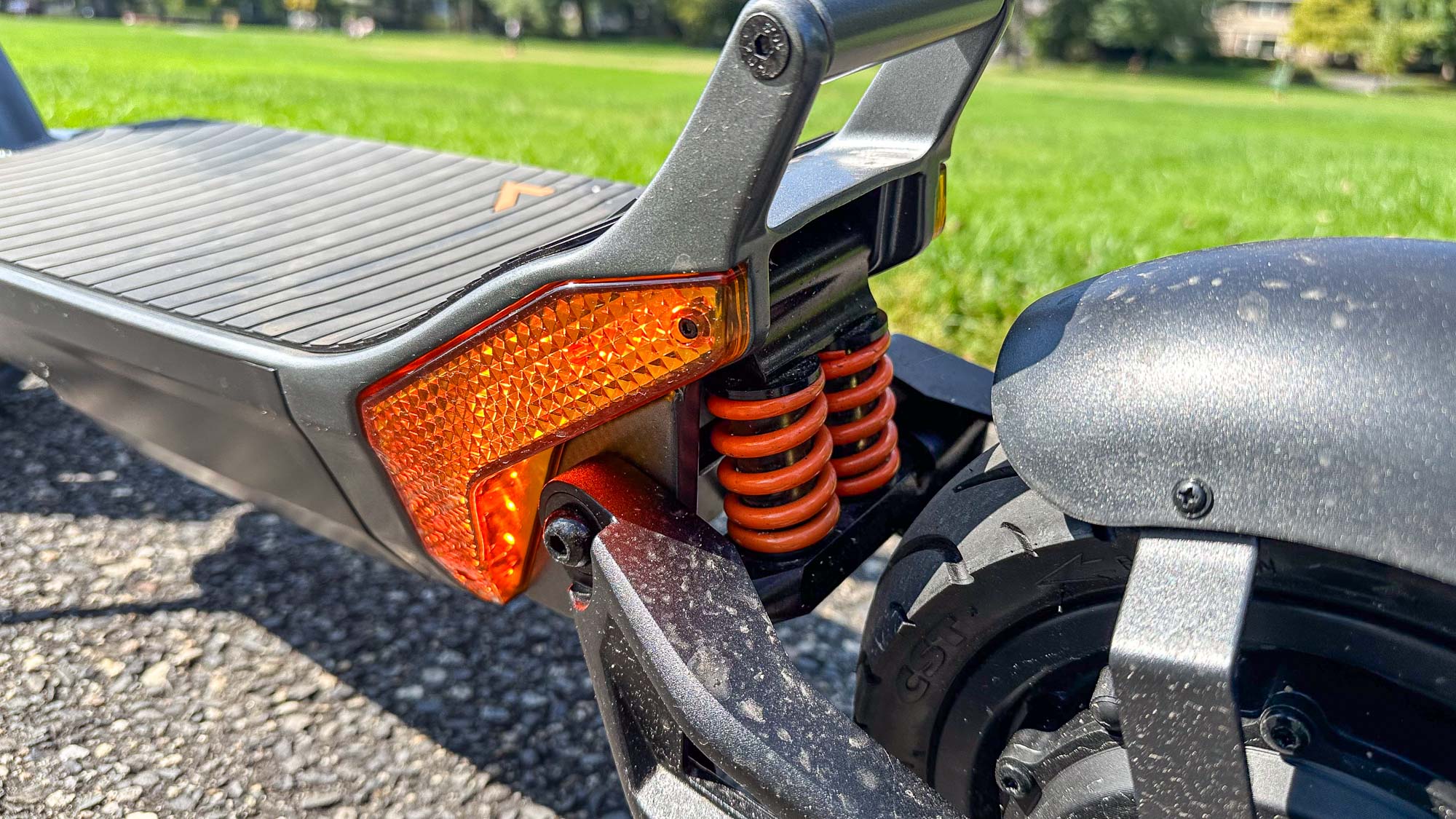
I like that the Apollo has lights both on the handlebars and on the deck, but I prefer some things on the Segway more. For example, on the Segway, the turn signal buttons are next to your left thumb. On the Apollo, the left turn signal button is by your left thumb, while the right button is near your right thumb. The problem with Apollo’s setup, I found, is that if you’re trying to make a right-hand turn, you have to take your thumb off the throttle in order to activate the turn signal.
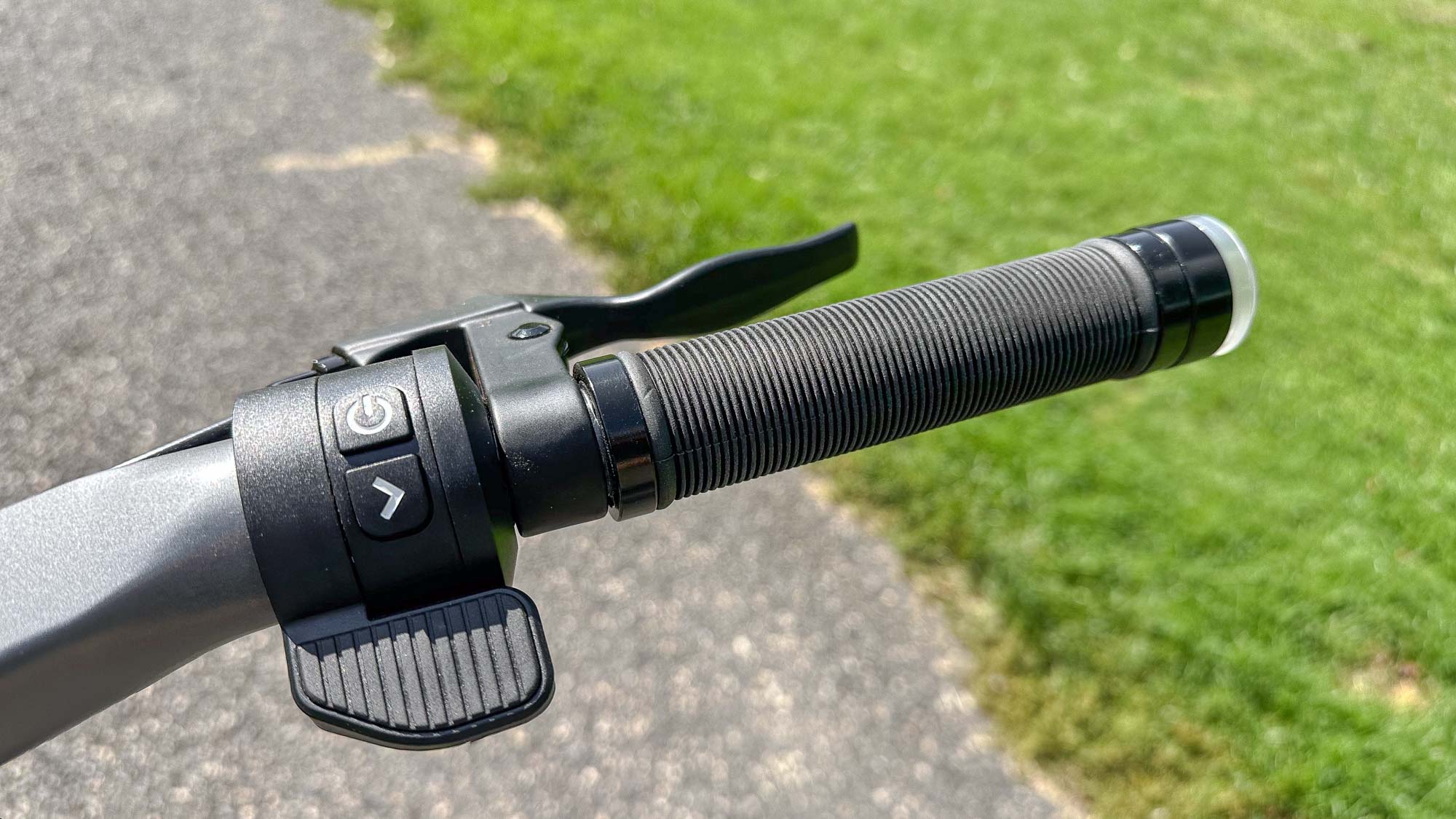
Another key difference: On Segway’s scooter, the turn signal stays on until you press the button again. On the Apollo, the turn signal stays on for seven seconds, then turns off automatically. If you’re waiting for a while at an intersection, you may find (as I did) that the signal will turn off before you can actually make the turn.
Speaking of the handlebars: The Apollo City has a thumb throttle on the right, with a thumb-activated regenerative braking system on the left. And, as a backup, there are hand brakes on both the right and left sides. I do like that, regardless of which braking method you use, the Apollo City’s tail light will flash red, warning those behind you that you’re slowing down.
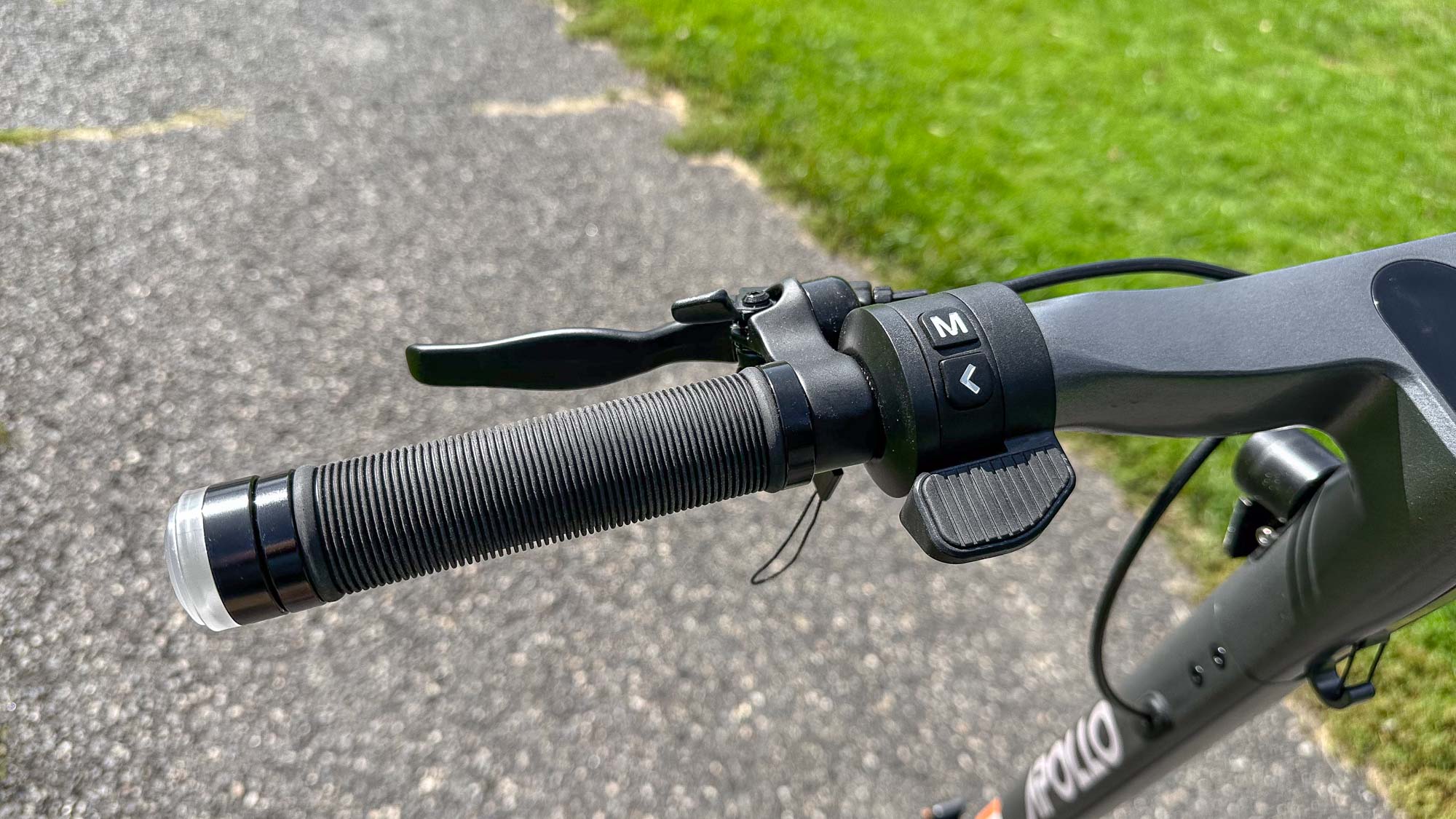
On the other end/hand, the Apollo City’s headlight isn’t the most powerful. At night, it was able to illuminate a small patch in front of me, but it was a lot smaller than with other scooters I tested in this price range.
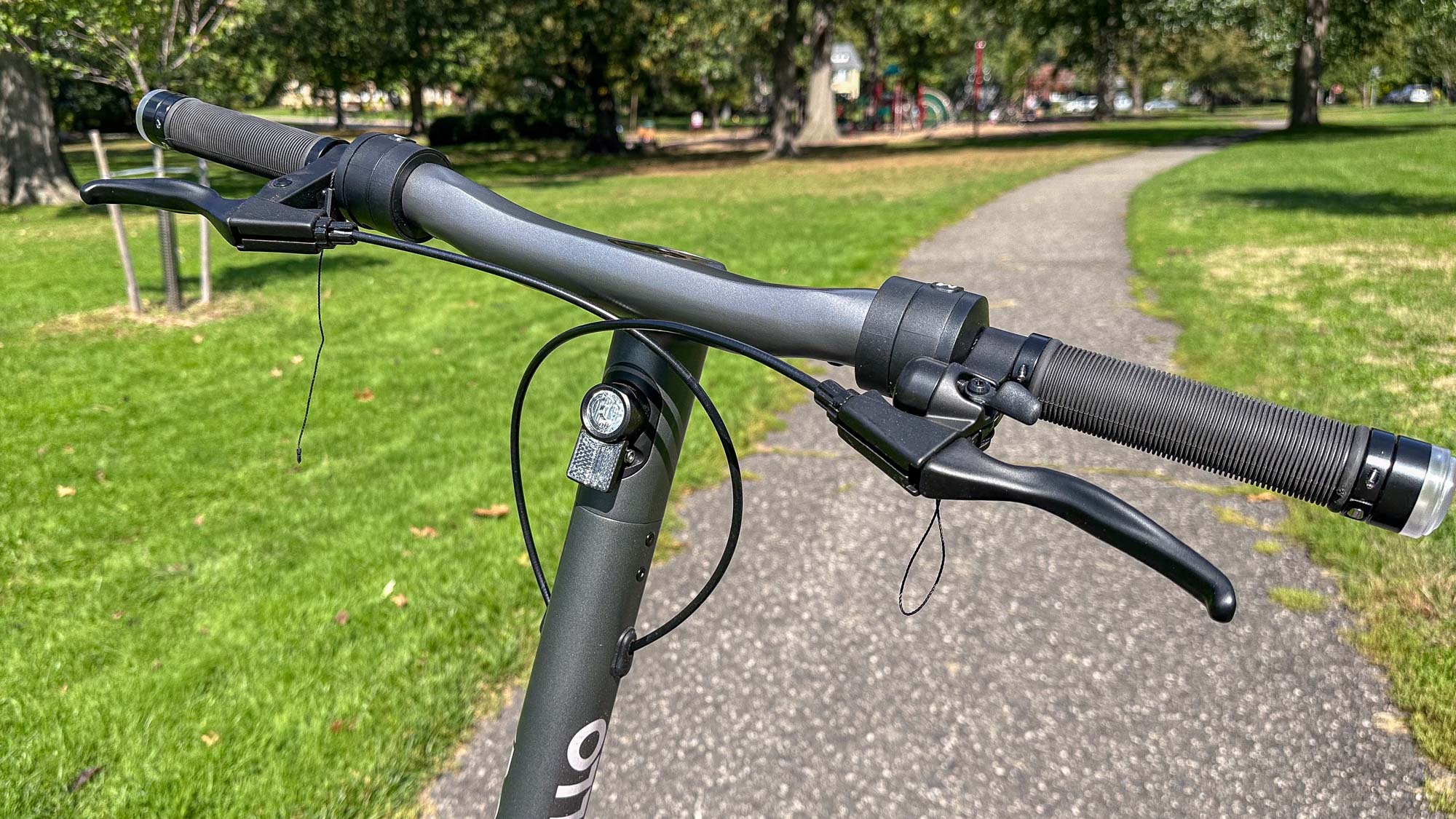
My other quibble is with the City’s latching mechanism: It’s easy to unlock the downtube, but in order to secure it to the deck, you have to pull out a hook from the stem, then lift up a metal bracket from the deck. None of the steps are difficult; it’s just that there’s too many.
Apollo City 2023 review: Performance
One thing I like about scooters that can go fast — but not too fast — is that I can keep up with local traffic. I don’t need, or want to rocket along at 40+ MPH, but being able to zip around at 25 to 30 MPH meant that I was traveling at, or close to, the same speed as cars on local roads. With a top speed of 32 MPH, the Apollo City hits the sweet spot for me.
Thanks to its large 10-inch pneumatic tires and full suspension, it also handled bumps on the road very well, too. While I definitely didn’t fly over potholes at full speed, the City made any imperfections in the road feel much less imperfect.
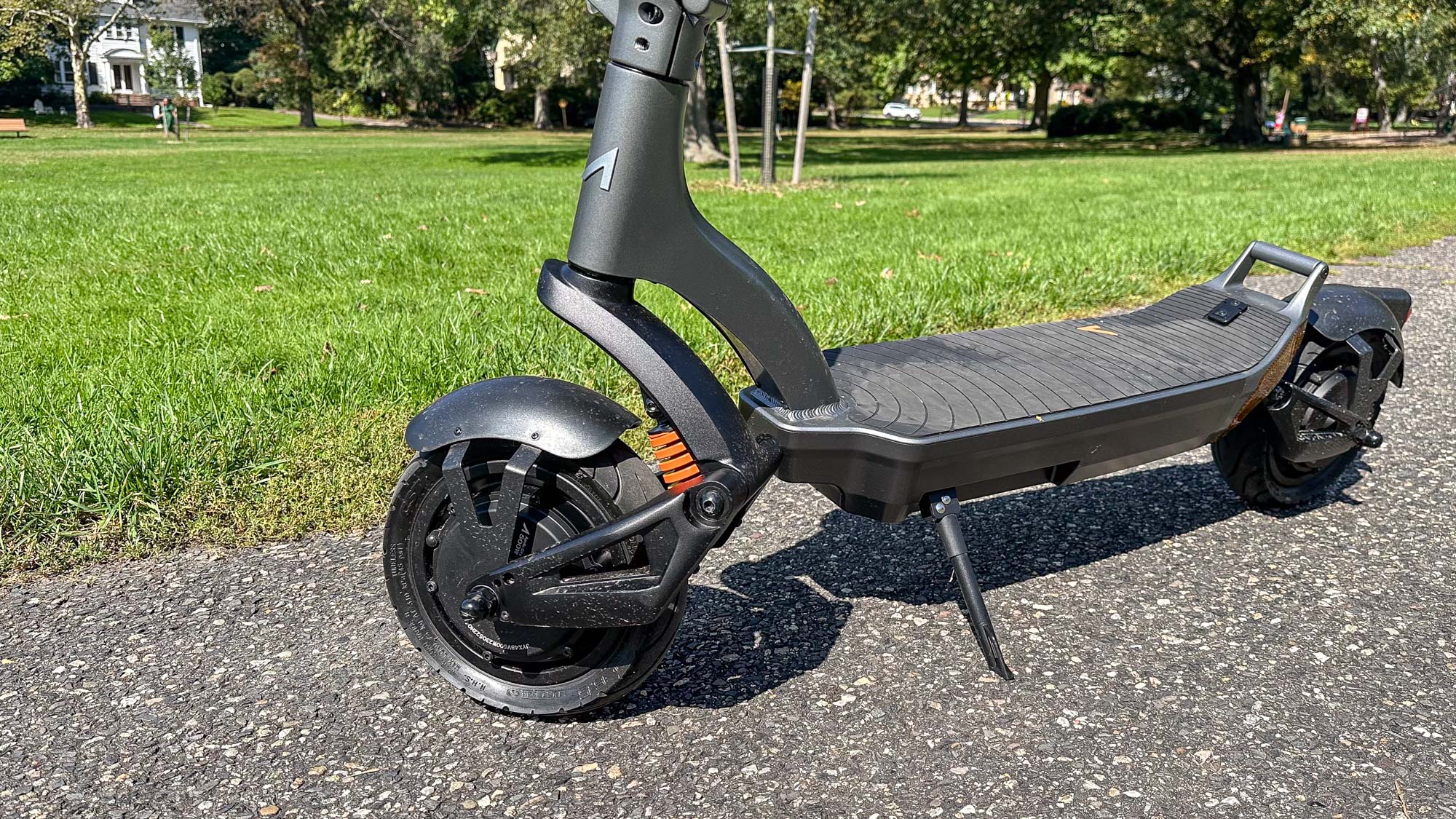
The City’s 500W motors were more than up to the task of getting me uphill. On my “tough hill test” — a 9 percent grade — the Apollo City roared up the hill at 20MPH. Along the way, I cruised past someone riding an Unagi Model One, who had to occasionally kick the ground with his foot to keep up his momentum.
Apollo City 2023 review: Battery life and range
As with all electric scooters, the range of the Apollo City will vary greatly depending on how you ride it. If you’re riding in Eco mode — which tops your speed at 9 miles per hour — you can get up to 40 miles on a charge. If, however, you ride all-out in Sport mode, you’ll only manage about 23 miles before you need to recharge the battery.
| Row 0 - Cell 0 | Eco (9 MPH) | Normal (20 MPH) | Sport (27/32 MPH) |
| Apollo City | 40 | 33 | 23 |
| Apollo City Pro | 43 | 33 | 23 |
My testing bore those numbers out: After I charged up the scooter and set it to Sport mode, I went for a 9-mile ride, averaging 19 MPH, which ate up 43 percent of the battery. So, Apollo’s 23-mile estimate seems pretty accurate.
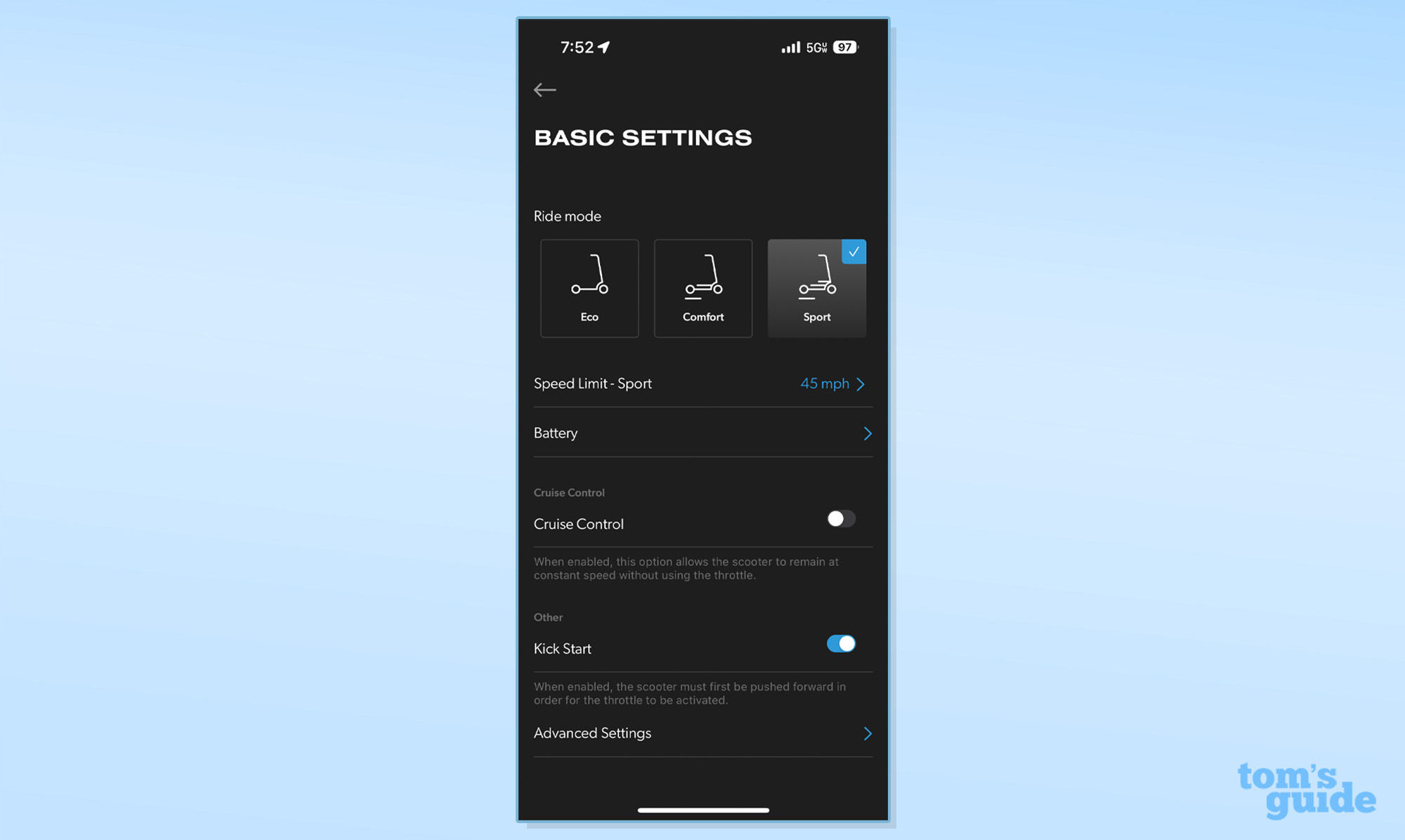
That’s on a par with the Segway Ninebot Kickscooter Max G2 and the Niu Kqi3 Max, both of which lasted for about 20 miles on a charge.
Apollo City 2023 review: App
In the Apollo app, you can also “lock” the scooter — it will engage the brakes so that it’s nearly impossible to roll. Unlike the Segway Ninebot, there’s no Apple Find My built in, so you won’t be able to locate it remotely.
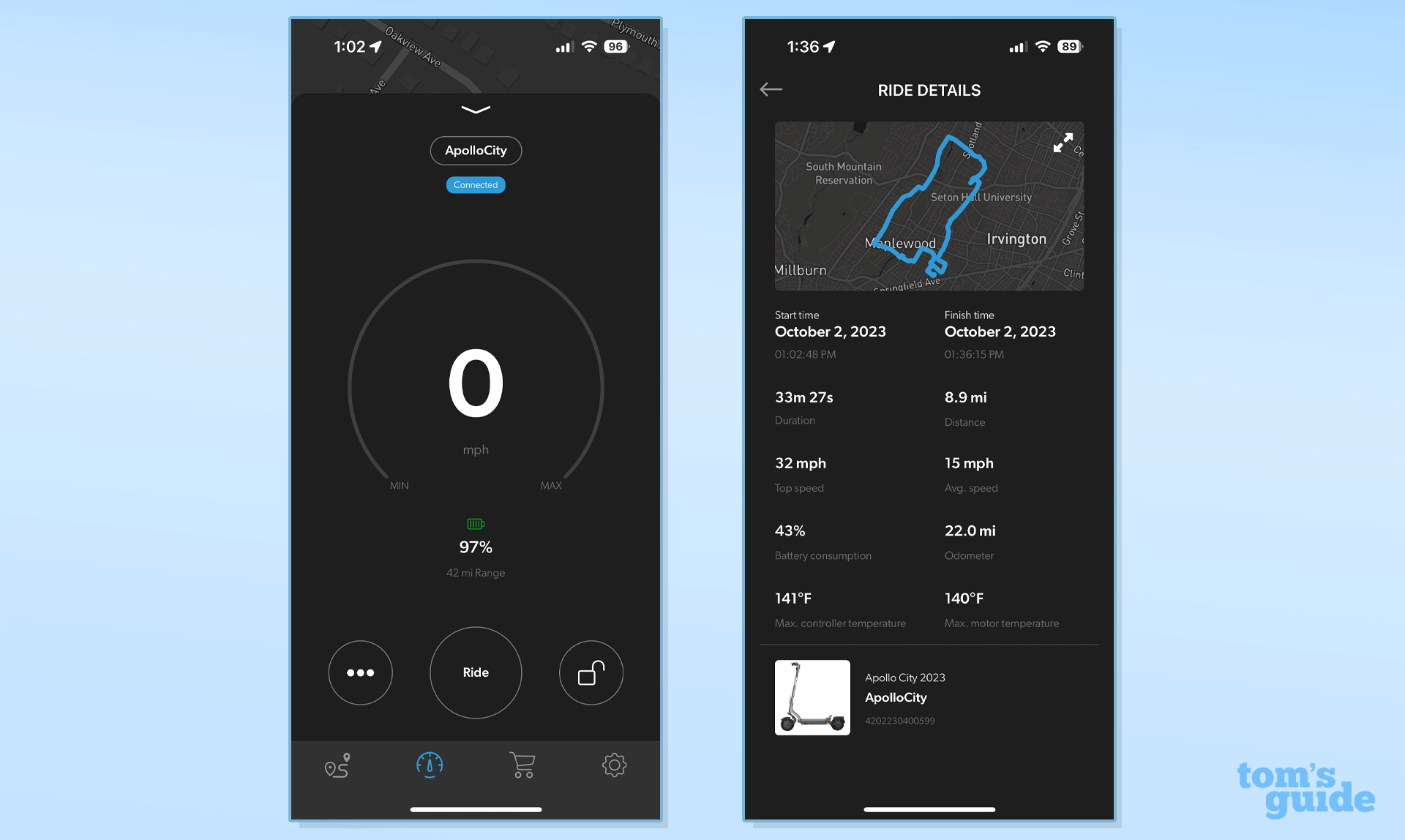
The app also lets you record your rides, using your phone’s GPS to track your location. You have to manually start and stop recording, but afterwards, the app will show you where you traveled, your average and max speeds, time elapsed, battery consumption, and temperature of the motor.
Apollo City 2023 review: Verdict
The Apollo City 2023 electric scooter is a very nice improvement over the original. My favorite new feature is the turn signal not just on the deck, but on the handlebars, too.
Among the best electric scooters I’ve tested, the closest comparisons to the Apollo City are the Segway Ninebot Kickscooter Max G2 and the Niu Kqi3 Max. Both of those models offer a similar range, and are each around $600 less than the Apollo City. However, neither are as fast as the Apollo City, nor do they have as robust a suspension system. If you want an electric scooter that can go fast and far, this is it.

Michael A. Prospero is the U.S. Editor-in-Chief for Tom’s Guide. He oversees all evergreen content and oversees the Homes, Smart Home, and Fitness/Wearables categories for the site. In his spare time, he also tests out the latest drones, electric scooters, and smart home gadgets, such as video doorbells. Before his tenure at Tom's Guide, he was the Reviews Editor for Laptop Magazine, a reporter at Fast Company, the Times of Trenton, and, many eons back, an intern at George magazine. He received his undergraduate degree from Boston College, where he worked on the campus newspaper The Heights, and then attended the Columbia University school of Journalism. When he’s not testing out the latest running watch, electric scooter, or skiing or training for a marathon, he’s probably using the latest sous vide machine, smoker, or pizza oven, to the delight — or chagrin — of his family.
